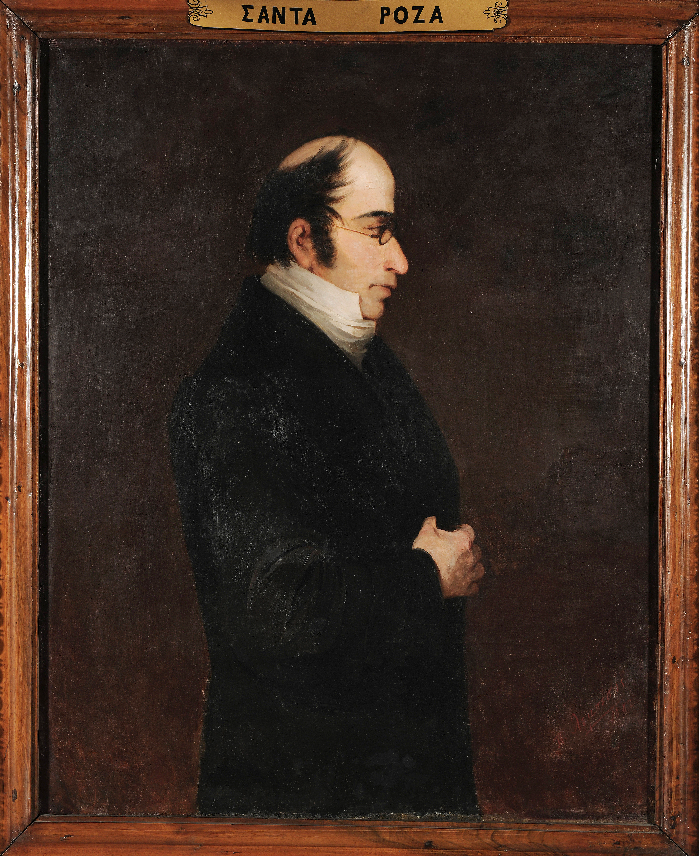Santorre di Santarosa ( 1783 - 1825 )

Italian military officer and politician, Annibale Santorre di Rossi de Pomarolo, Count of Santarosa was born on November 18, 1783, in Savigliano, a town in today’s north-western Italy, then part of the Kingdom of Sardinia (better known as the Kingdom of Piedmont). He was the offspring of a recently ennobled but not rich family.
Aged just 13, he enlisted in the army of Piedmont, in which his father served as an officer (with the rank of colonel). In April 1796 he received the baptism of fire in the Battle of Montovi against Napoleon’s troops. Four years later, he fought in the Battle of Marengo, again against the French, during which he was captured.
After completing his studies at the University of Turin, he became actively involved in politics, at a time when Piedmont had come under French control. In 1807 he was elected mayor of Savigliano. From 1812 to 1814, he was deputy governor of the province of La Spezia.
With Napoleon’s defeat and the restoration of the Kingdom of Piedmont, Santarosa returned to the ranks of the armed forces of the kingdom, bearing the rank of captain. In summer 1815, he once again fought against the French, this time at the Battle of Grenoble. In the following year, he was demobilised and took a senior position in the Ministry of Military and Navy of Piedmont. For his military service and overall contribution to Piedmont, in 1820 he was awarded the Grand Cross of the Order of Saints Mauritius and Lazarus.
Santarosa supported the expulsion of Austria from the Italian peninsula and the Italian unification under a constitutional government. He joined the Carbonari and in March 1821 was amongst the leaders of a revolutionary movement in Piedmont, whose main demand was the granting of a constitution. In the revolutionary government, Santarosa became minister of War. However, the movement was quickly suppressed, and he was forced to leave Piedmont, seeking refuge successively in Switzerland, France, and Great Britain.
While in Britain, he came into contact with the Philhellenic Committee of London and associated closely with a number of eminent philhellenes, including Lord Byron. He was an ardent supporter of the Greek struggle for independence, on the one hand because of his love for the ancient Greek civilisation and on the other because he believed that Greeks and Italians shared a common fate. Thus, he decided to visit insurgent Greece, where he indeed arrived in late 1824. However, due to his previous revolutionary activity in Piedmont, he was met with suspicion by the provisional Greek government, which did not want the Greek struggle for national independence to be associated with the Carbonari. Awaiting a decision on whether, and under what conditions, he would be permitted to join the Greek army, he travelled around Greece, mainly visiting archaeological sites, including Epidaurus, Aegina, Athens, and Marathon.
In March 1825, when Ibrahim invaded the Peloponnese, Santarosa was told that he would be accepted into the ranks of the Greek army, but as an ordinary soldier rather than an officer. He was also asked to conceal his identity under a pseudonym, Derossi. In late April, with a group of about 100 men, he landed on Sphacteria, which was under siege by Ibrahim. He fought heroically against the numerically superior Turco-Egyptian forces. Despite being trapped and seriously injured, he refused to surrender and continued to fight. On May 8, 1825, he fell to an enemy bullet. Many years later, a memorial in his honour was erected on Sphacteria.





